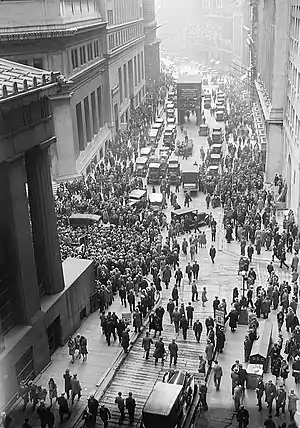The 1920s PortalThe 1920s (pronounced "nineteen-twenties" often shortened to the "'20s" or the "Twenties") was a decade that began on January 1, 1920, and ended on December 31, 1929. In America, it is frequently referred to as the "Roaring Twenties" or the "Jazz Age", while in Europe the period is sometimes referred to as the "Golden Twenties" because of the economic boom following World War I (1914–1918). French speakers refer to the period as the "Années folles" ("crazy years"), emphasizing the era's social, artistic, and cultural dynamism.
Silent films were popular in this decade, with the highest-grossing film of this decade being either the American silent epic adventure-drama film Ben-Hur: A Tale of the Christ or the American silent war drama film The Big Parade, depending on the metrics used. Sinclair Lewis was a popular author in the United States in the 1920s, with his books Main Street and Elmer Gantry becoming best-sellers. Best-selling books outside the US included the Czech book The Good Soldier Švejk, which sold 20 million copies. Songs of this decade included "Mack the Knife" and "Tiptoe Through the Tulips". During the 1920s, the world population increased from 1.87 to 2.05 billion, with approximately 700 million births and 525 million deaths in total. (Full article...) Selected article -The 1926 World Series was the championship series of the 1926 Major League Baseball season. The 23rd edition of the Series, it pitted the National League champion St. Louis Cardinals against the American League champion New York Yankees. The Cardinals defeated the Yankees four games to three in the best-of-seven series, which took place from October 2 to 10, 1926, at Yankee Stadium and Sportsman's Park. This was the first World Series appearance (and first National League pennant win) for the Cardinals, and would be the first of 11 World Series championships in Cardinals history. The Yankees were playing in their fourth World Series in six years after winning their first American League pennant in 1921 and their first world championship in 1923. They would play in another 36 World Series (and win 26 of those), as of the end of the 2023 season. (Full article...)Featured picture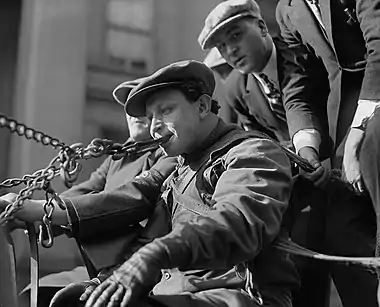 Zishe Breitbart Siegmund "Zishe" Breitbart (1893–1925), shown here pulling a heavy weight using only his teeth, was a Polish strongman and circus performer who was known as the "Strongest Man in the World" during the 1920s. He was widely popular in both Europe and the U.S., but died at the age of 32 after an accident during a performance. Did you know...
Related portalsSelected biography -Leon Bismark "Bix" Beiderbecke (March 10, 1903 – August 6, 1931) was an American jazz cornetist, pianist and composer. Beiderbecke was one of the most influential jazz soloists of the 1920s, a cornet player noted for an inventive lyrical approach and purity of tone, with such clarity of sound that one contemporary famously described it like "shooting bullets at a bell”. His solos on seminal recordings such as "Singin' the Blues" and "I'm Coming, Virginia" (both 1927) demonstrate a gift for extended improvisation that heralded the jazz ballad style, in which jazz solos are an integral part of the composition. Moreover, his use of extended chords and an ability to improvise freely along harmonic as well as melodic lines are echoed in post-WWII developments in jazz. "In a Mist" (1927) is the best known of Beiderbecke's published piano compositions and the only one that he recorded. His piano style reflects both jazz and classical (mainly impressionist) influences. All five of his piano compositions were published by Robbins Music during his lifetime. (Full article...)TopicsWikiProjects
List articlesCategory puzzle Select [►] to view subcategories
1920s-related lists 1920-related lists 1921-related lists 1922-related lists 1923-related lists 1924-related lists 1925-related lists 1926-related lists 1927-related lists 1928-related lists 1929-related lists Lists of 1920s films 1920s politics-related lists More Did you know (auto generated)
Categories 1920s 1920 1921 1922 1923 1924 1925 1926 1927 1928 1929 1920s by city 1920s by continent 1920s by country 1920s-related lists Months in the 1920s 1920s beginnings 1920s endings 1920s decade overviews 1920s in LGBT history 1920s in philosophy 1920s missing person cases 1920s architecture 1920s in the arts 1920s awards 1920s censuses 1920s competitions 1920s conferences 1920s disasters 1920s economic history 1920s in education 1920s in the environment 1920s events 1920s fads and trends 1920s fashion 1920s festivals Fiction set in the 1920s 1920s in film 1920s in health 1920s hoaxes Interwar period 1920s in law 1920s in mass media 1920s in military history 1920s in politics 1920s in religion 1920s in science 1920s in sports 1920s in technology 1920s toys 1920s in transport 1920s in women's history 1920s works General imagesThe following are images from various 1920s-related articles on Wikipedia.
Recognized contentFeatured articles:
Featured lists:
Associated WikimediaThe following Wikimedia Foundation sister projects provide more on this subject:
Discover Wikipedia using portals
|
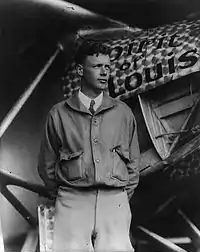


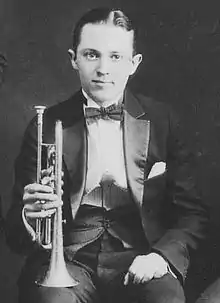


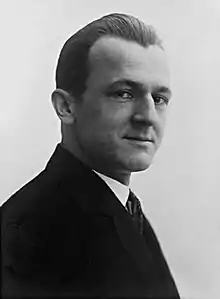


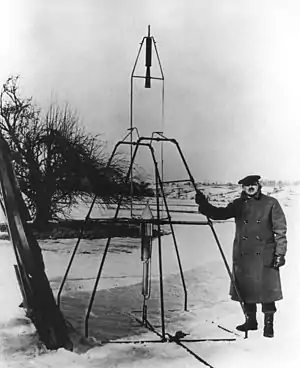

_-_2.JPG.webp)

.svg.png.webp)

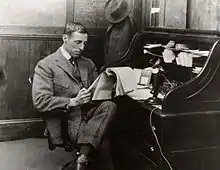
.jpg.webp)

_(cropped).jpg.webp)
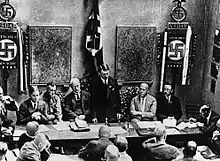
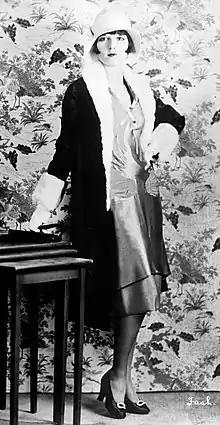
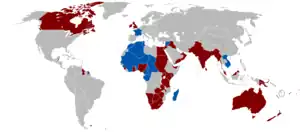
_-_Fondo_Mar%C3%ADn-Kutxa_Fototeka.jpg.webp)
_Cropped.jpg.webp)


.jpg.webp)
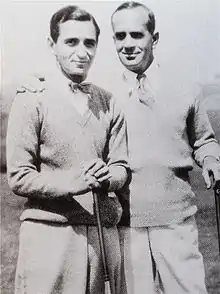

.jpg.webp)
